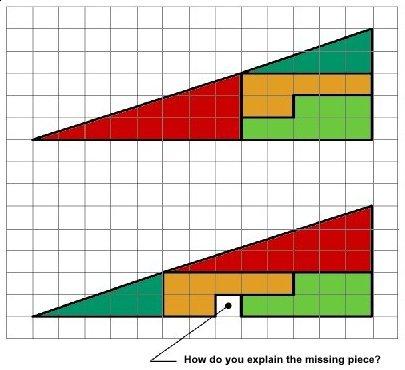
Image Credit:
On this grid are two triangles made up of several different colored pieces. The first triangle is complete, however the second triangle which appears to consist of all the same pieces as the first has a square missing. Where has it gone ? Try counting the blocks that make up each piece - are they the same ?

I'd say Davy has it right. The hypotenuse on the top is bowed inward, on the bottom it is bowed outward (compare where the hypotenuse crosses the grid lines, you can see they are slightly off - to account for one extra square out of 32 (3% by volume), you don't need to cheat by much), therefor the bottom one is slightly bigger, accounting for the missing piece when the components are rearranged. I thought they could do the same simply by making the grid lines 3% narrower, no need to resort to bending lines.